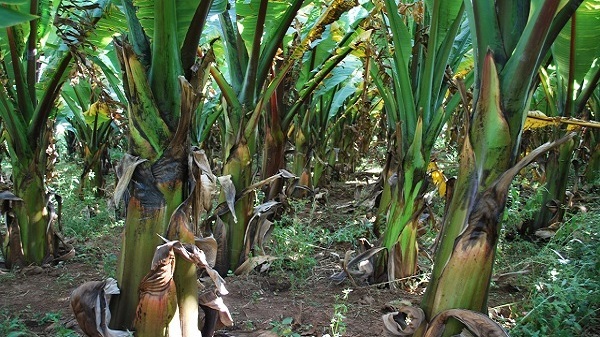
Ethiopia’s Green Legacy Initiative is closely tied to the country’s efforts to protect and enhance its rich biodiversity resources and capacity in disaster risk management. The initiative, launched in 2019 by Prime Minister Abiy Ahmed, aims to address the environmental challenges the country faces, such as deforestation, land degradation, and the loss of biodiversity as well as the resultant effects of drought and challenges in disaster risk management. How can these three strategies reciprocate each other and what are the possible positive results thereof? The author of this article intends to analyze the relationship between the four in the Ethiopian context.
The Green Legacy Initiative focuses on planting billions of trees across Ethiopia, contributing to the restoration of degraded ecosystems. By rehabilitating forests and planting indigenous tree species, the initiative helps restore natural habitats for a variety of species, promoting biodiversity while helping to fight off drought and flood disasters in the country and reduce the risks they pose on populations affected.
Deforestation and soil erosion are significant threats to Ethiopia’s biodiversity. The massive tree-planting campaign not only prevents soil erosion but also restores ecosystems, improving conditions for flora and fauna that rely on these habitats. Recent reports indicate that an estimated 1.5 billion tons of topsoil is washed away every year in Ethiopia, and this significantly affects the income and food security of smallholder farmers.
A critical aspect of the initiative is the focus on planting indigenous tree species, which are better suited to local ecosystems. These native species provide essential resources such as food, shelter, and breeding grounds for wildlife, ensuring the protection of Ethiopia’s unique biodiversity thus rolling back a huge level climate change induced drought and other natural disasters in the country.
By planting trees, the initiative helps improve water retention in the soil and increases precipitation in some areas. Forests play a crucial role in the water cycle, and by conserving water sources, the initiative indirectly supports aquatic ecosystems and species dependent on freshwater resources. It promotes food forests as well.
Ethiopia is home to an estimated 6,000 species of higher plants of which 10% are endemic. The country has 284 species of wild mammals and 861 species of birds. Data on other wild animals are scanty; and the number of reptile, fish, amphibian and arthropod species identified so far are 201, 200, 63 and 1,225, respectively. Of these faunal resources, 29 wild mammal, 18 bird, 10 reptile, 40 fish, 25 amphibian and seven arthropod species are endemic to Ethiopia, such as the Ethiopian wolf (Canis simensis). Ethiopia also has a wide diversity of microbial biodiversity, which is hardly explored.
The nation is home to various endemic and endangered species. As forests and ecosystems recover, these species have a better chance of survival. The initiative contributes to expanding their habitats and ensuring a healthier environment for wildlife to thrive and a possible threat that they can face due to drought. This indicates that both green legacy imitative and protection of biodiversity promote disaster risk management.
The initiative also helps Ethiopia combat climate change, which poses a threat to biodiversity worldwide. By sequestering carbon through large-scale tree planting, the initiative enhances the resilience of ecosystems, making them less vulnerable to climate impacts.
Ethiopia’s Afromontane forests are known for their high levels of biodiversity. The Green Legacy helps restore these forests, benefiting species like the Ethiopian wolf and the Gelada baboon, both of which are endemic to the country. As trees are planted, they provide shelter and food for birds, insects, and mammals, contributing to the overall health of ecosystems and as spots for tourist attraction.
By aligning its tree-planting efforts with the protection of local ecosystems and species, Ethiopia is making significant strides in biodiversity conservation through the Green Legacy Initiative. The long-term ecological benefits include healthier environments for humans, wildlife, and ecosystems alike.
Ethiopia has a very diverse set of ecosystems ranging from humid forests and extensive wetlands to deserts. The country is biologically rich, with more than 6500 vascular plant species of which 12% are endemic mainly due to geographical isolation and unique climatic conditions. The country has 284 species of wild mammals and 861 species of birds. Though data on other wild animals are scanty, the number of reptiles, fish, amphibian and arthropod species identified so far are 201, 200, 63 and 1,225, respectively. Of these faunal resources, 29 wild mammal, 18 bird, 10 reptile, 40 fish, 25 amphibian and seven arthropod species are endemic to Ethiopia.
Ethiopia is not only the origin of human species but also a cradle for cultivated crops such as coffee, teff, enset, and a center of diversity for many crop species such as durum wheat, barley and sorghum. Research indicate that the country has rich resource of indigenous farm animals, which are comprised of 28 cattle, 9 sheep, 8 goat, 7 camel, 6 donkey, 8 horse, 2 mule and 7 chicken breeds . Despite the rich biodiversity in the country, threats to biodiversity and endemism are among the critical environmental issues in the country
The country has been working towards integrated implementation of National Biodiversity Strategy Action Plan with a vision that Ethiopia’s biodiversity and ecosystems are conserved and sustainably utilized by all sectors providing food security and contributing to poverty eradication and improved quality of life of the Ethiopian people.
Ethiopia has set a number of institutional and policy frameworks that govern the conservation, sustainable use and access and sharing of benefits arising from the use of the country’s biodiversity and related community knowledge.
Ethiopia is one of the top 25 biodiversity-rich countries in the world, and hosts two of the world’s 34 biodiversity hotspots, namely: the Eastern Afromontane and the Horn of Africa hotspots. It is also among the countries in the Horn of Africa regarded as major center of diversity and endemism for several plant species. The Ethiopian flora is estimated at 6,000 species of higher plants of which 10% are considered to be endemic.
A major challenge in Ethiopia is that most protected areas do not have legal status. The Ethiopian Wildlife Conservation Authority created in 2008 only manages 13 National Parks, wildlife reserves and sanctuaries. The rests are under the regional authorities, rural communities and the private sector and are inadequately protected, particularly wetland and freshwater ecosystems. There is a need to increase the coverage of protected areas, with due attention to their ecosystem representation as well as effectiveness in terms of management.
The main direct threats to Ethiopia’s biodiversity include: habitat loss and degradation due to expansion of agriculture and settlements and encroachment of invasive species; unsustainable utilization of biodiversity from overgrazing, overharvesting, and unregulated hunting; proliferation of invasive species; and pollution. Indirect causes of biodiversity loss in the country are demographic change, poverty, and lack of awareness and coordination. Long-term, climate change represents challenges, particularly by shifting growing seasons.
The expansion of green legacy initiative and conservation and development of bio-diversity institute of the country is instrumental in markedly reducing disaster risk in the country caused by natural calamities like landslides and other natural calamities that were observed in Ethiopia during the rainy season.
In addition to the green legacy initiative that is globally acclaimed, Ethiopia has developed ecotourism projects and resorts across the country.
Ethiopia’s ecotourism parks are part of the country’s broader efforts to promote sustainable tourism while conserving its rich natural and cultural heritage. With diverse ecosystems, unique wildlife, and stunning landscapes, Ethiopia has significant potential to develop ecotourism and attract environmentally conscious travelers.
Semien Mountain National Park: UNESCO World Heritage Site, this park is one of Ethiopia’s premier ecotourism destinations. It is home to endangered species like the Walia Ibex, Ethiopian wolf, and Gelada baboon. Ecotourism in the Simien Mountains focuses on nature conservation guided trekking, and supporting local communities through tourism revenue.
Bale Mountain National Park: Located in the Oromia Region, the Bale Mountains are renowned for their biodiversity, including several endemic species. Ecotourism activities such as hiking, bird-watching, and wildlife observation are promoted, while initiatives aim to involve local communities in conservation efforts and provide economic benefits
Lake Tana: Ethiopia’s largest lake, is an ecotourism hub due to its rich biodiversity and cultural heritage, including the historic island monasteries. The biosphere reserve promotes sustainable tourism practices, protecting the lake’s ecosystem while benefiting local communities.
Ecotourism in the Omo Valley revolves around the rich cultural heritage of the indigenous tribes living in the area. Visitors are encouraged to engage in respectful cultural exchanges, and the revenue generated from ecotourism helps improve the livelihoods of the local people while preserving their traditions.
The lakes of the Ethiopian Rift Valley, such as Lake Langano, Lake Hawassa, and Lake Abaya, are being developed for ecotourism. These lakes offer opportunities for bird-watching, fishing, and nature walks, contributing to both environmental conservation and community-based tourism.
Recognized as a UNESCO World Heritage Site, the Konso Cultural Landscape combines cultural heritage and environmental sustainability. The area is known for its terraced agriculture and unique stone structures, and ecotourism helps support the preservation of both the environment and the indigenous culture.
The linkage between NGLI, biodiversity and tourism reflects the core of Ethiopia’s Climate Change Resilient Green Economy Policy and Strategy which sets an example for the rest of Africa.
Moreover, the corridor development projects that are being conducted in the major cities of the country including Addis Ababa will not only promote healthy life for the urban population but will also effectively supplement to the entire green economy development in the country, the future of Ethiopia certainly depends on biodiversity resources, green legacy projects and tourism as well as mitigating the effects of climate change through disaster risk management programs.
BY SOLOMON DIBABA
THE ETHIOPIAN HERALD TUESDAY 22 OCTOBER 2024




